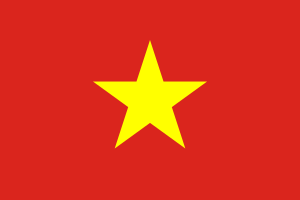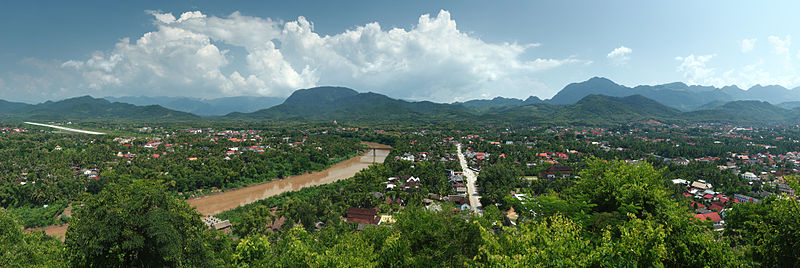asia
Asia (/ˈeɪʒə/ ⓘ AY-zhə, UK also /ˈeɪʃə/ AY-shə) is the largest continent in the world by both land area and population.

 It covers an area of more than 44 million square kilometers, about 30% of Earth's total land area and 8% of Earth's total surface area. The continent, which has long been home to the majority of the human population, was the site of many of the first civilizations. Its 4.7 billion people constitute roughly 60% of the world's population. Asia shares the landmass of Eurasia with Europe, and of Afro-Eurasia with both Europe and Africa. In general terms, it is bounded on the east by the Pacific Ocean, on the south by the Indian Ocean, and on the north by the Arctic Ocean. The border of Asia with Europe is a historical and cultural construct, as there is no clear physical and geographical separation between them. It is somewhat arbitrary and has moved since its first conception in classical antiquity. The division of Eurasia into two continents reflects East–West cultural, linguistic, and ethnic differences, some of which vary on a spectrum rather than with a sharp dividing line. A commonly accepted division places Asia to the east of the Suez Canal separating it from Africa; and to the east of the Turkish Straits, the Ural Mountains and Ural River, and to the south of the Caucasus Mountains and the Caspian and Black seas, separating it from Europe. China and India traded places as the largest economies in the world from 1 to 1800 CE. China was a major economic power for much of recorded history, with the highest GDP per capita until 1500. The Silk Road became the main east–west trading route in the Asian hinterlands while the Straits of Malacca stood as a major sea route. Asia has exhibited economic dynamism as well as robust population growth during the 20th century, but overall population growth has since fallen. Asia was the birthplace of most of the world's mainstream religions including Hinduism, Zoroastrianism, Judaism, Jainism, Buddhism, Confucianism, Taoism, Christianity, Islam, Sikhism, as well as many other religions. (Full article...) Featured articleTaiwanese indigenous peoples, also known as Formosans, Native Taiwanese or Austronesian Taiwanese and formerly as Taiwanese aborigines, Takasago people or Gaoshan people, are the indigenous peoples of Taiwan, with the nationally recognized subgroups numbering about 569,000 or 2.38% of the island's population. This total is increased to more than 800,000 if the indigenous peoples of the plains in Taiwan are included, pending future official recognition. When including those of mixed ancestry, such a number is possibly more than a million. Academic research suggests that their ancestors have been living on Taiwan for approximately 15,000 years. A wide body of evidence suggests that the Taiwanese indigenous peoples had maintained regular trade networks with numerous regional cultures of Southeast Asia before the Han Chinese colonists began settling on the island from the 17th century, at the behest of the Dutch colonial administration and later by successive governments towards the 20th century. Taiwanese indigenous peoples are Austronesians, with linguistic, genetic and cultural ties to other Austronesian peoples. Taiwan is the origin and linguistic homeland of the oceanic Austronesian expansion, whose descendant groups today include the majority of the ethnic groups throughout many parts of East and Southeast Asia as well as Oceania and even Africa which includes Brunei, East Timor, Indonesia, Malaysia, Madagascar, Philippines, Micronesia, Island Melanesia and Polynesia. The Chams and Utsul of contemporary central and southern Vietnam and Hainan respectively are also a part of the Austronesian family. (Full article...)Selected Country Vietnam, officially the Socialist Republic of Viet Nam (SRV), is a country at the eastern edge of mainland Southeast Asia, with an area of about 331,000 square kilometres (128,000 sq mi) and a population of over 100 million, making it the world's fifteenth-most populous country. Vietnam shares land borders with China to the north, and Laos and Cambodia to the west. It shares maritime borders with Thailand through the Gulf of Thailand, and the Philippines, Indonesia, and Malaysia through the South China Sea. Its capital is Hanoi and its largest city is Ho Chi Minh City (commonly referred to by its former name, Saigon). Vietnam was inhabited by the Paleolithic age, with states established in the first millennium BC on the Red River Delta in modern-day northern Vietnam. The Han dynasty annexed Northern and Central Vietnam under Chinese rule from 111 BC, until the first dynasty emerged in 939. Successive monarchical dynasties absorbed Chinese influences through Confucianism and Buddhism, and expanded southward to the Mekong Delta, conquering Champa. During most of the 17th and 18th centuries, Vietnam was effectively divided into two domains of Đàng Trong and Đàng Ngoài. The Nguyễn—the last imperial dynasty—surrendered to France in 1883. In 1887, its territory was integrated into French Indochina as three separate regions. In the immediate aftermath of World War II, the nationalist coalition Viet Minh, led by the communist revolutionary Ho Chi Minh, launched the August Revolution and declared Vietnam's independence in 1945. (Full article...)Featured biographyChoe Bu (Korean: 최부, 1454–1504) was a Korean diarist, historian, politician, and travel writer during the early Joseon Dynasty. He was most well known for the account of his shipwrecked travels in China from February to July 1488, during the Ming dynasty (1368–1644). He was eventually banished from the Joseon court in 1498 and executed in 1504 during two political purges. However, in 1506 he was exonerated and given posthumous honors by the Joseon court. Choe's diary accounts of his travels in China became widely printed during the 16th century in both Korea and Japan. Modern historians also refer to his written works, since his travel diary provides a unique outsider's perspective on Chinese culture in the 15th century. The attitudes and opinions expressed in his writing represent in part the standpoints and views of the 15th century Confucian Korean literati, who viewed Chinese culture as compatible with and similar to their own. His description of cities, people, customs, cuisines, and maritime commerce along China's Grand Canal provides insight into the daily life of China and how it differed between northern and southern China during the 15th century. (Full article...)General imagesThe following are images from various Asia-related articles on Wiki English. Featured pictureCeiling of the Sioni Cathedral, a Georgian Orthodox cathedral in Tbilisi, capital of Georgia. The cathedral is situated in historic Sionis Kucha (Sioni Street) in downtown Tbilisi. It was initially built in the 6th and 7th centuries. Since then, it has been destroyed by foreign invaders and reconstructed several times. The current church is based on a 13th-century version with some changes from the 17th to 19th centuries. The Sioni Cathedral was the main Georgian Orthodox Cathedral and the seat of Catholicos-Patriarch of All Georgia until the Holy Trinity Cathedral was consecrated in 2004.. Did you know...
Updated: 6:33, 14 February 2024 In the news
Related portalsMajor Religions in Asia Middle East Central Asia and Surroundings Indian Subcontinent Southeast Asia East Asia Selected panorama
Panorama of the city of Luang Prabang in northern Laos, as seen from Phu Si hill. The city was formerly the capital of a kingdom of the same name, and after Laos's independence from France, it was the royal capital and seat of government of the Kingdom of Laos. This view features the Nam Khan river on the left, and Luang Prabang International Airport on the very far left. TopicsCategoriesAssociated WikiThe following Wiki Foundation sister projects provide more on this subject: More portalsDiscover Wikipedia using portals Shortcuts to this page: Asia portal • P:ASIA Purge server cache |
This article uses material from the Wikipedia English article Portal:Asia, which is released under the Creative Commons Attribution-ShareAlike 3.0 license ("CC BY-SA 3.0"); additional terms may apply (view authors). Content is available under CC BY-SA 4.0 unless otherwise noted. Images, videos and audio are available under their respective licenses.
®Wikipedia is a registered trademark of the Wiki Foundation, Inc. Wiki English (DUHOCTRUNGQUOC.VN) is an independent company and has no affiliation with Wiki Foundation.








































































